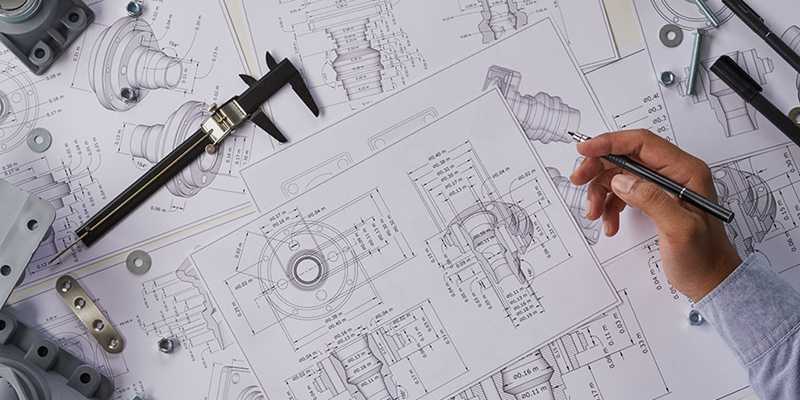- October 7, 2022
Since the advent of Computer Numerical Control (CNC) machines, machining processes have become much better and more manageable. Manufacturers have resorted to applying these subtractive tools in fabricating various custom outputs with less tolerance for error.
In fact, CNC machines meet the two primary quality standards in production machining – precision and accuracy. Even so, most people use these terms interchangeably while they have essential variations. Hence, this article takes a detailed look at the difference between accuracy and precision in production machining.
What is the Definition of Precision?
Precision is a metric that defines the nearness of two or more results or measurements to each other. This term is one of the most important terms used in machining. In a simplified way, precision in machining refers to the reproducibility or repeatability of multiple components with close dimensions when manufacturing.
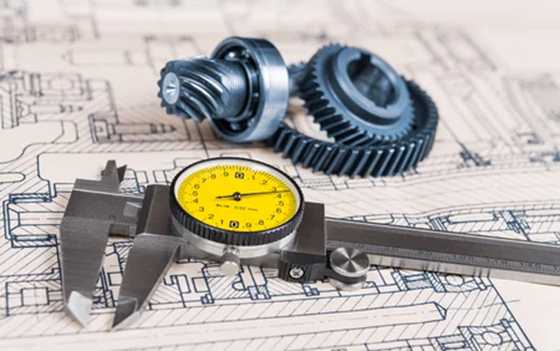
The Importance of Precision
Precision machines are pivotal in modern industries as they directly impact machining reproducibility, accuracy, and efficiency. Nowadays, the demand for the fabrication of micro products or components with micro features continues to grow in large numbers.
In the meantime, machining these parts in large volumes requires more precise design methods and machining dynamics to meet the specified requirements. Thus, precision does matter in machining operations as it reflects the capability of a manufacturing process or machine to reproduce the almost exact measures of manufactured parts consistently.
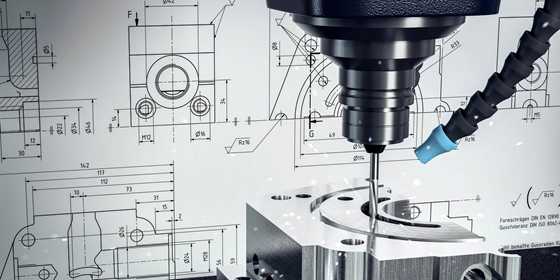
Precision in Machining
To a large extent, CNC machines express repeatability for measured dimensions when removing excess materials, thus creating parts with tolerances in a small range. However, precision measurements for these parts must be carried out under the same conditions to avoid unwanted deviations or errors. The greater the precision of machining tools, the closer the manufactured components are.
Precision vs. Tolerances
At the same time, machinists specify or set standard tolerance limits to account for the slight variations between the parts made from the same machine. Explicitly, tolerance refers to the permissible range of deviation between the corresponding dimensions of machined parts. In design and manufacturing, standard tolerance limits are often small numbers determined by manufacturers based on a part’s function, form, and fit.
The standard CNC machining tolerances are typically set at +/- 0.127mm. More so, expert machinists set the tightest machining tolerances in the range of +/- 0.0254mm, roughly equivalent to the size of human hair. Maintaining and adhering to these tight tolerance limits ensures that minor differences do not impact the part’s precision or functionality.
What is the Definition of Accuracy?
This is another common term that applies to machining. Accuracy is a metric that defines the closeness of a measured value to the reference or standard value. To explain this concept in the machining context, accuracy refers to the degree of nearness to which a fabricated workpiece matches the overall requirements specified in the design.
In machining, accuracy depends on the tools, the kinematic structure, and the type of material or workpiece. An accurate machine will perform a particular machining process or a combination of instructions like cutting, boring, grinding, and drilling as the manufacturer or operator intended.
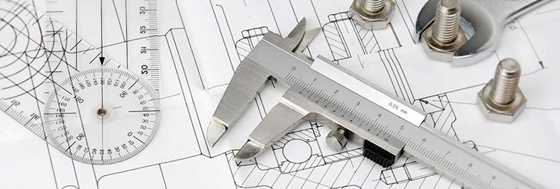
The Importance of Accuracy
For instance, if an expert machinist inputs code to a machine to cut a workpiece to a 50mm length, an accurate device will perform the exact 50mm cut without errors. However, it is extremely challenging to attain or create the same parts without slight differences in specific dimensions such as diameter, width, and length of machined parts.
For this reason, experts use measurement data based on accuracy to reflect the errors of a machine or manufacturing process. Thus, the lesser the difference between the measured result of the manufactured part and the required standard, the more accurate the machine tools or manufacturing process.
Accuracy in Machining
Modern CNC machines are highly accurate for most projects as some tools like the CNC mills and lathes can produce parts with an accuracy of +/– 0.0025mm. This is equivalent to fabricating parts as small as the quarter size of human hair. Astonishing right?
In addition, machinists or designers specify the acceptable range of variation in the dimension of the machined part from the standard. They are especially vital to maintain the functionality of machined parts that interfere with other components.
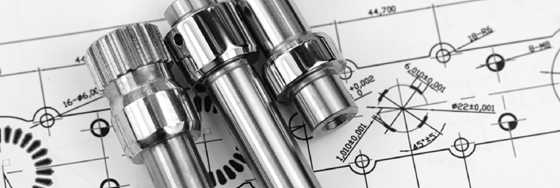
Accuracy vs. Tolerances
Even so, not all parts require maximum accuracy and tight tolerance due to the extra costs, setup, inspections, and time associated with the machining process. For instance, fabricating the parts of an automobile engine would require a higher tolerance than a door handle. In other words, the latter has fewer features combined with other automobile components, thus the need for broader tolerance.
Aside from length, width, hole size, and other dimensions, surface roughness remains a pivotal tolerance factor. Experts set and adhere to the tolerance limit of 0.001635 mm for flat and perpendicular surfaces and 0.003175 mm for curved surfaces. So, accuracy and tolerance are all important, it’s best when machining processes deliver precise and accurate products.
Differences Between Accuracy and Precision in Machining
The precision and accuracy of a manufacturing tool or process help determine the success of production machining. But then, these two terms often get contrasted or mistaken for each other when used as measures of observational errors.
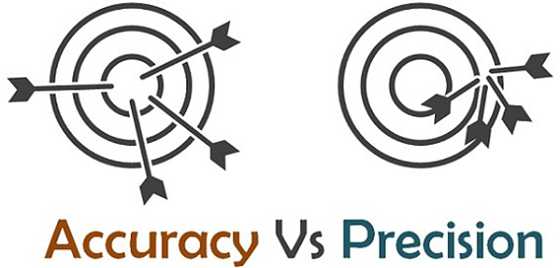
Thus, the failure to identify the variations between precision and accuracy can have a profound negative impact on how collected measurement data gets processed or on how one concludes the outcome of various manufacturing processes. Take a look at the differences between accuracy and precision in machining below:
1. Different Description
Precision represents the close agreement of variation that lies in the dimensions of machined parts with one another. However, machining accuracy refers to the closeness of manufactured components’ measurements to the standard specifications.
More simply, good machining precision ensures you can fabricate almost exact dimensions of machined parts repeatedly without introducing random errors. In contrast, good machining accuracy ensures the conformity of your manufactured parts to the theoretical benchmark.
2. Type of Error Indicated
Accuracy reflects the error of a manufacturing system or tool, while precision measurements help indicate the error among manufactured components randomly.
3. Number of Measurements
Accessing machining precision requires multiple measurements under the same condition. This is to ascertain the conformity of your results. On the flip side, machining accuracy needs a single measurement. This is because, in accuracy measurements, you only have to compare the dimension of manufactured components to the standard value.
Accuracy vs. Precision Examples
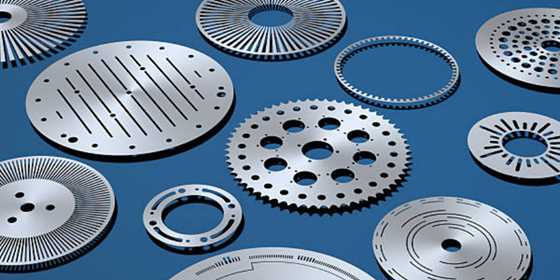
Accuracy and precision largely remain independent parameters that engineers employ to determine the success of a manufacturing operation. Most CNC machines use computer software to hold programmed dimensions when designing and manufacturing a part. Regardless, the outcome of a manufacturing process can come in different ways, which are:
- Precise and accurate
- Not Precise but accurate
- Precise but not accurate
- Not Precise and not accurate
Therefore, it is vital to distinguish between these parameters and collect the measurements separately for an overall quality machining service. Below are some practicable analogies or examples to help better understand the concept of precision and accuracy in part machining:
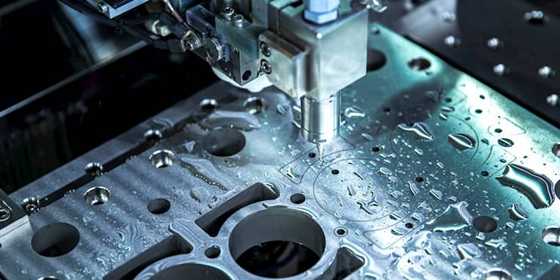
1. Precise and Accurate
Generally, all manufacturing industries desire to produce precise and accurate parts for their clients. For example, let’s say a manufacturer inputs instruction to drill a hole in a rod 70mm from an edge, with a tolerance set at +/- 1mm. If the CNC machine drills the hole within variable lengths measuring between 69mm and 71mm for all the rod batches, then this manufacturing process is precise and accurate.
2. Not Precise but Accurate
Some parts get machined accurately, but not all manufactured components come as precise products. For example, an engineer intends to fabricate a piston compression measuring 1.2 inches in height with a tolerance of +/- 0.005 inches.
Say some pistons get manufactured within the height range of 1.195 and 1.205 inches, whereas other pistons in this production batch have heights that fall below or above the tolerance limit. Therefore, you can deduce that this manufacturing process is accurate but not precise with quality inspections.
3. Precise but Not Accurate
In this case, the machine parts have similar dimensions but are not close to the required measurement. From the previous analogy, if the fabricated piston parts have heights of 1.21, 1.22, 1.21, and 1.215 inches. Then, quality inspections will indicate that this manufacturing process is precise but not accurate since the permissible tolerance limit is +/- 0.005 inches.
4. Not Precise and Not Accurate
Some manufacturing operations can go wrong, with the final parts deemed as not precise and inaccurate. For instance, if a machinist intends to fabricate a plastic piece of 20mm length, with a tolerance of +/- 0.5mm. Peradventure, the plastic parts manufactured have varying lengths of 18mm, 22mm, 19mm, 17mm, and 21mm.
This measurement result shows that the sizes of the manufactured plastic parts in this batch are not closely agreeable, while they also wholly deviate from the required dimension. Thus, you can infer that this manufactured batch is equally imprecise and inaccurate.
Benefits of Accuracy and Precision in Part Production
The success of any manufacturing industry depends on its ability to produce precise and accurate parts consistently. As a result, CNC machines get applied across various manufacturing industries today due to their relatively high precision and accuracy features. They include automotive, medical, construction, electrical, aerospace, oil and gas, marine, etc. Here are some benefits of accuracy and precision in part manufacturing:
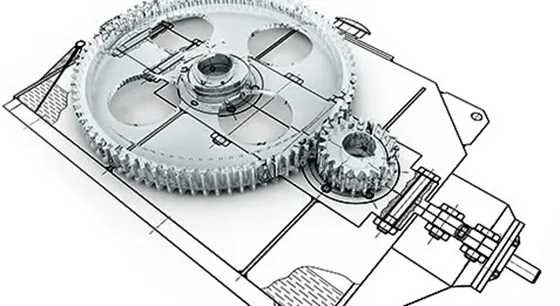
1. Safety Consideration
Undoubtedly, safety remains one of the essential factors to consider when part manufacturing. This is especially true for aerospace and medical devices that require high precision and accurate components. If these components get manufactured as defective or below industry-standard products, then this can put users at risk. So, manufacturing precise and accurate parts appeals to customers while ensuring their safety.
2. Hitch-free Testing and Prototyping
High machining accuracy and precision allow for easier prototyping of various designs and parts, including complex titanium machining operations. Further, automatic machining helps cut down costs from intensive labor while ensuring high-quality parts. Aside from this, machining precision and accuracy helps ensure a seamless performance testing of the machined part.
3. Easier Calibration of Equipment
CNC machines comprise highly precise and accurate computerized devices that allow manufacturers to easily adjust or calibrate various tools. Besides, the machines store the manufacturing instructions until machinists input new codes to produce a different part or make specific changes.
Get High Accuracy and Precision Products at WayKen
Today, quality machining services are essential to achieving precision and accuracy for various parts. At WayKen, we have experienced professionals that can handle all your high-precision machining services. We offer a range of top-flight CNC milling and turning procedures with standard tolerances to meet your specific design requirements. Moreover, we assure quality, precise, affordable, and long-lasting parts at any volume.
Contact us today for one-on-one support service to get your project started. Stay assured that you will get a response within 12 hours.
Conclusion
High precision doesn’t necessarily mean high accuracy, hence the need to distinguish between these two parameters. Thus, we are positive you have a better knowledge of the differences between the terms – accuracy and precision in CNC machining. Understanding these terms will help you identify essential specifications and compare them with your requirements to get the best results.
FAQs
Why are accuracy and precision important for machined parts?
Accuracy and precision are vital aspects of machining operations, especially for prototypes and end-use parts. Accuracy comes into play to ensure that machined parts meet the required dimensions and designs with no errors affecting mechanical function. In the same vein, precision machining ensures that the manufactured parts have consistent production values.
Which manufacturing process has higher machining accuracy?
Concisely, CNC micro milling procedures have higher machining accuracy than other regular CNC machine operations. This micro-milling process involves computer software programs to control and direct rotary multi-point cutting tools to remove excess materials. As such, these automated operations yield accurate custom products or parts, but they are expensive and time-consuming.
What is precision tolerance?
Precision tolerance is the permissible degree of variability that limits or controls measurement error. In production machining, manufacturers set the precision tolerances for each batch of fabricated components to ensure that variations do not impact vital specifications.

